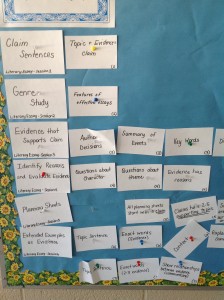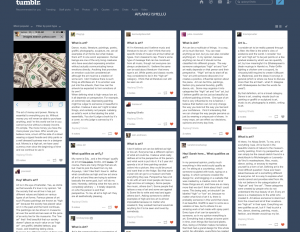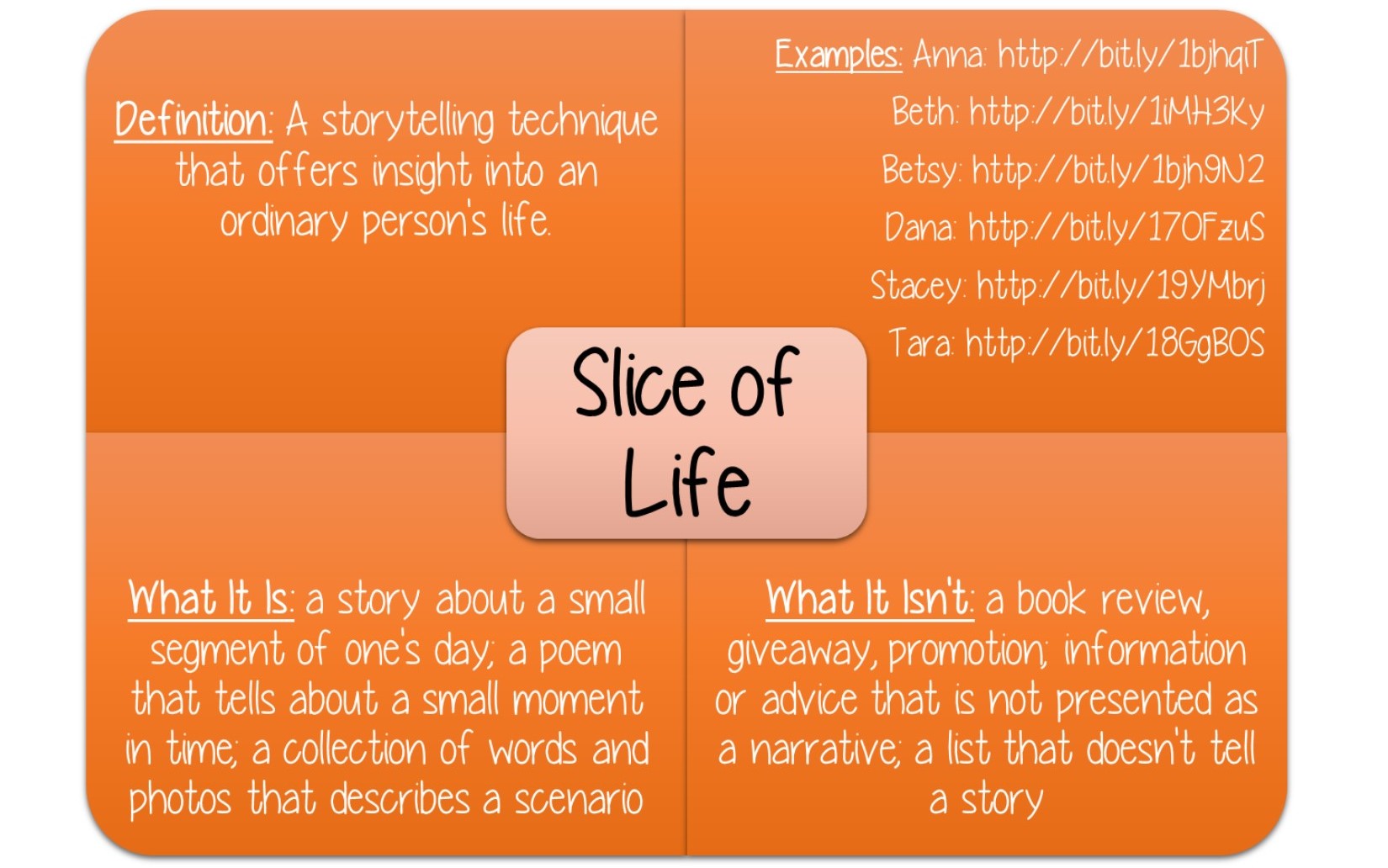I have a son in high school who is, by all measures, a skilled reader and a dedicated student. When he reads for school, much to his chagrin, I tend to bug him by asking him lots of annoying questions. I do this in part because I am a concerned parent who wants to stay in touch with my son’s education. However, I also do it because I’m a literacy researcher at heart and I want to see what and how he is thinking when engaged in school-related reading.
 In the course of my meddlesome investigations, I noticed an interesting pattern across his assigned reading of three different novels. For all of his novel reading, he was expected to use the FIDDS protocol, in which he was directed to analyze Figurative language, Imagery, Diction, Details, and Syntax. This protocol (often used in AP English and IB ELA classes) is intended to help students focus on elements an author uses to develop tone or express style. Students are then supposed to consider how style or tone contributes to the larger themes, purposes, or meanings of the text. In my son’s case however (and likely for many other students), the use of the protocol became the end for him, and not the means through which he understood the text.
In the course of my meddlesome investigations, I noticed an interesting pattern across his assigned reading of three different novels. For all of his novel reading, he was expected to use the FIDDS protocol, in which he was directed to analyze Figurative language, Imagery, Diction, Details, and Syntax. This protocol (often used in AP English and IB ELA classes) is intended to help students focus on elements an author uses to develop tone or express style. Students are then supposed to consider how style or tone contributes to the larger themes, purposes, or meanings of the text. In my son’s case however (and likely for many other students), the use of the protocol became the end for him, and not the means through which he understood the text.
As I understand the task he was assigned, he was expected to identify a minimum number of FIDDS examples and connect them to identified themes of the books in the process of a writing a literary analysis. For example, for one book he looked for examples of imagery and figurative language used by the author to develop the idea that love can both heal and hurt. With this task laid out before him, his reading then focused on finding and explaining the examples… he wasn’t really engaged with the larger narrative of the novel or the human problem it was exploring, nor was he focused on developing a cohesive analysis of the book’s theme. When I asked about the larger conflict of the novel and why this novel was worth reading, he replied that his assignment didn’t require him to think about that; he just had “to find these examples and write a short paragraph about each one.” The benefit to this was that he learned about literary devices and had the opportunity to consider them in use. The drawback was that he lost an opportunity to consider the larger value of the book as he read; he wasn’t reading with important questions in mind, just the task. In fact, once he identified a sufficient number of examples and satisfied the requirements of the protocol as assigned, he felt that this part of his work was done, and he no longer seemed to actively consider how the theme continued to be developed by the author. Reviewing his work and the book, I found quotes and sections that would have better served his analysis, but he felt that he didn’t need to use them because he already had examples for those particular FIDDS elements. He explained to me again, patiently but on the verge of annoyance, that he was completing the FIDDS task as directed, and that what I was asking for (a thematic analysis of the book supported by multiple examples) was not what he was supposed to do. I’m quite certain, however, that the goal of using FIDDS is to develop effective literary analyses, but in this case, finding examples of FIDDS had become the goal itself.
 We educators love our strategies, routines, and protocols though, especially with respect to reading. Indeed, much of the professional learning that I do with teachers involves, to varying degrees, strategies and routines. So my purpose here is not to say that protocols or strategies are inherently problematic, but rather I want to argue that we run the risk of minimizing the value of strategies if we use them in isolation, overuse them, use them when they don’t really fit, or use them without processing or connecting them to larger themes/concepts.
We educators love our strategies, routines, and protocols though, especially with respect to reading. Indeed, much of the professional learning that I do with teachers involves, to varying degrees, strategies and routines. So my purpose here is not to say that protocols or strategies are inherently problematic, but rather I want to argue that we run the risk of minimizing the value of strategies if we use them in isolation, overuse them, use them when they don’t really fit, or use them without processing or connecting them to larger themes/concepts.
The challenge of effectively using learning strategies for reading isn’t just a problem in ELA classrooms either. I’ve seen similar issues in many social studies classes. Reading protocols like APPARTS and SOAPSTone present the same problems. APPARTS stands for: Author, Place and time, Prior Knowledge, Audience, Reason, The main idea, and Significance; it is meant to be used when students analyze primary documents. SOAPSTone is similar and asks students to identify, for any document they read, the Speaker, the Occasion, the Audience, the Purpose, the Subject, and the Tone. These approaches stem from the idea that historians question the contexts and sources of documents as a part of their disciplinary practices. What sometimes gets left out for students, however, is WHY historians approach reading this way. Historians consider these textual elements as they gather and analyze evidence from documents in the process of trying to resolve an historical problem. For historians, the source and context of a document shape its larger meaning and value as evidence. Absent a good driving, historical question to focus these approaches, such protocols become decontextualized lists of steps for students to complete. This is particularly true when students are asked to use such a routine for every single document they read. When the use of the protocol or strategy becomes the outcome, students miss out on the important process of considering why to use such a tool in the first place. In other words, if students are asked to use these routines but are never engaged in thinking about how this information (source, context, etc.) actually matters in an historical investigation, the work becomes just another routine task.
I want to clearly state that I’m not criticizing my son’s teacher, or any teacher, for using these kinds of tools. I use them myself when I teach. Rather, I want us to honestly reflect on how we currently use such strategies and then talk about how we can use them more effectively! The following questions are constantly on my mind now as I think about this problem:
- How helpful are some of the strategies or protocols that we use, and when do they get in the way?
- How can we best teach students multiple strategies and then help them learn to use the tools that work best for them to engage in deep learning, not just task completion?
- How do we set meaningful, authentic purposes for reading that drive the use of strategies and lead to students’ construction of new knowledge, not repetition of known facts?
- Who is driving the conversation around strategies, and what can we do to make sure that stakeholders understand that strategies are a means to an end, and not an end unto themselves?
There are no simple answers to these questions, by the way, and that’s okay. We just need to ask ourselves these questions as we teach and constantly seek to get better at what we do. Even so, I think that the last question above is particularly important and merits a bit of unpacking. I carried out professional development in one district where everyone had been trained in Thinking Maps, and the teachers were required to use Thinking Maps at regular intervals. In this context, instructional planning began to revolve around the strategy and was no longer driven by students’ needs and content learning goals. Administrators would visit classrooms looking for Thinking Maps instead of looking and listening for evidence of student learning. Teachers collected data on their use of Thinking Maps, not on students’ learning of new concepts and skills. The completion of the Thinking Maps became the goal of teaching, and the learning of content was backgrounded. Now, I’m sure that students learned content at some point in this process, but no one ever stopped to ask if Thinking Maps were the most appropriate strategy for each given lesson in which they were used (especially after the district invested lots of money in materials and training!). In this situation, most teachers did what many students do: they completed the task without ever really thinking about the tools or considering alternatives.
Now, I get why this happens. Administrators are under pressure to show “best practices” in their buildings, and there is certainly value in developing common language across classrooms with shared approaches. Requiring everyone to use the same strategy might make some sense as a first step, but never going beyond that and introducing a range of malleable, alternative practices seems very problematic to me. Even more problematic is the use of strategies for reading that is NOT driven by interesting, content-rich questions.
 So what is the solution? How, for example, would I adapt my son’s assignment? I think I would have backgrounded FIDDS for starters, asking students instead to read with a larger question in mind. I would have asked students to read the novel as a means of engaging with a range of big, important questions connected to possible themes in the book. I would then have students track the development of this theme and develop claims about the author’s perspective on our driving questions, perhaps focusing in on key chapters (depending upon the book). I would ask students to identify multiple examples of how the theme surfaced in the novel and then discuss how these examples might suggest the perspective of the author. I would then have students make claims about how the author integrated her perspective on the theme into the book, and then review their reading notes to select the best evidence to support their claims (after having worked with them around standards of evidence for literary analysis). At this point, students could use FIDDS to help them analyze their evidence and consider the types of evidence they had found, and perhaps go back into the book to look for other types of evidence. In this scenario, students would use FIDDS to serve the larger purpose of reading, FIDDS would not be the purpose itself.
So what is the solution? How, for example, would I adapt my son’s assignment? I think I would have backgrounded FIDDS for starters, asking students instead to read with a larger question in mind. I would have asked students to read the novel as a means of engaging with a range of big, important questions connected to possible themes in the book. I would then have students track the development of this theme and develop claims about the author’s perspective on our driving questions, perhaps focusing in on key chapters (depending upon the book). I would ask students to identify multiple examples of how the theme surfaced in the novel and then discuss how these examples might suggest the perspective of the author. I would then have students make claims about how the author integrated her perspective on the theme into the book, and then review their reading notes to select the best evidence to support their claims (after having worked with them around standards of evidence for literary analysis). At this point, students could use FIDDS to help them analyze their evidence and consider the types of evidence they had found, and perhaps go back into the book to look for other types of evidence. In this scenario, students would use FIDDS to serve the larger purpose of reading, FIDDS would not be the purpose itself.
Reading with no clear purpose just becomes an exercise in task completion, and if many of our students operate in this mode, it is because they have learned to do so in our schools. If we want students to think deeply as they read, then we need to anchor our instruction in big, conceptual problems that connect to the texts they are reading. This requires us to foreground disciplinary thinking and problem solving in which questions come first and tools are adapted or shaped depending upon the context. Of course, teaching in this way is not easy work. It requires lots of time and constant reflection, and students are not likely to appreciate more complex tasks in the beginning! Nevertheless, if we want our students to go deeper in their learning and reading, then we have to design and scaffold instructional activities that move them in this direction. Reading protocols and strategies can be of great help in this work, but only when they are processed and used carefully as the means to an end, and not as the end in and of themselves.
 Darin Stockdill is the Content Area Literacy Consultant at Oakland Schools. He joined the Learning Services team here in 2011 after completing his doctorate in the area of Literacy, Language, and Culture at the University of Michigan’s School of Education. At Michigan, he taught content area literacy methods courses to pre-service teachers (and was named a School of Education Outstanding Instructor in 2010) and researched adolescent literacy, with a focus on the connections (or lack thereof at times) between youths’ academic and non-academic literacy practices. Before this stint in academia, Darin was a classroom Social Studies and English teacher in Detroit for 10 years, working with both middle and high school students, and he also took on curriculum leadership roles in his school. Before teaching at the secondary level, he worked as a substance abuse and violence prevention specialist with youth in Detroit, and also taught literacy and ESL to adults in Chicago.
Darin Stockdill is the Content Area Literacy Consultant at Oakland Schools. He joined the Learning Services team here in 2011 after completing his doctorate in the area of Literacy, Language, and Culture at the University of Michigan’s School of Education. At Michigan, he taught content area literacy methods courses to pre-service teachers (and was named a School of Education Outstanding Instructor in 2010) and researched adolescent literacy, with a focus on the connections (or lack thereof at times) between youths’ academic and non-academic literacy practices. Before this stint in academia, Darin was a classroom Social Studies and English teacher in Detroit for 10 years, working with both middle and high school students, and he also took on curriculum leadership roles in his school. Before teaching at the secondary level, he worked as a substance abuse and violence prevention specialist with youth in Detroit, and also taught literacy and ESL to adults in Chicago.
 A few months ago, I had the opportunity to share dinner and conversation with James Popham. As an avid fan of his work on learning progressions, I was excited to finally meet him. Three years prior, in the midst of a statewide collaboration to build a Common Core Standards-aligned model 6-12 ELA curriculum, I had hit upon Popham’s research.
A few months ago, I had the opportunity to share dinner and conversation with James Popham. As an avid fan of his work on learning progressions, I was excited to finally meet him. Three years prior, in the midst of a statewide collaboration to build a Common Core Standards-aligned model 6-12 ELA curriculum, I had hit upon Popham’s research. Susan Wilson-Golab joined Oakland Schools in 2010 following 22 years of in the field 6-12 experience across two different states and rural, suburban, and urban contexts. Her research and practice focus heavily on the evolving definition of literacy, developmental learning progressions, and formative assessment. At the district level, Susan has served as classroom teacher, Literacy Specialist, and ELA Curriculum Coordinator. These experiences and study helped Susan in her role as Project Leader for developing a model 6-12 ELA curriculum for the Michigan Association of Intermediate School Administrators (MAISA)— a curriculum resource now globally available. More recently, Susan launched Michigan Teachers as Researchers Collaborative (MiTRC). The mission: to build collaborative participatory research between university and secondary teachers from around the state interested in exploring and developing the teaching and assessing of writing. In 2000, she joined the National Writing Project through the satellite Oakland Writing Project site based out of University of Michigan. She now serves as Site Director for the Oakland Writing Project.
Susan Wilson-Golab joined Oakland Schools in 2010 following 22 years of in the field 6-12 experience across two different states and rural, suburban, and urban contexts. Her research and practice focus heavily on the evolving definition of literacy, developmental learning progressions, and formative assessment. At the district level, Susan has served as classroom teacher, Literacy Specialist, and ELA Curriculum Coordinator. These experiences and study helped Susan in her role as Project Leader for developing a model 6-12 ELA curriculum for the Michigan Association of Intermediate School Administrators (MAISA)— a curriculum resource now globally available. More recently, Susan launched Michigan Teachers as Researchers Collaborative (MiTRC). The mission: to build collaborative participatory research between university and secondary teachers from around the state interested in exploring and developing the teaching and assessing of writing. In 2000, she joined the National Writing Project through the satellite Oakland Writing Project site based out of University of Michigan. She now serves as Site Director for the Oakland Writing Project.

 We educators love our strategies, routines, and protocols though, especially with respect to reading. Indeed, much of the professional learning that I do with teachers involves, to varying degrees, strategies and routines. So my purpose here is not to say that protocols or strategies are inherently problematic, but rather I want to argue that we run the risk of minimizing the value of strategies if we use them in isolation, overuse them, use them when they don’t really fit, or use them without processing or connecting them to larger themes/concepts.
We educators love our strategies, routines, and protocols though, especially with respect to reading. Indeed, much of the professional learning that I do with teachers involves, to varying degrees, strategies and routines. So my purpose here is not to say that protocols or strategies are inherently problematic, but rather I want to argue that we run the risk of minimizing the value of strategies if we use them in isolation, overuse them, use them when they don’t really fit, or use them without processing or connecting them to larger themes/concepts.
 Darin Stockdill is the Content Area Literacy Consultant at Oakland Schools. He joined the Learning Services team here in 2011 after completing his doctorate in the area of Literacy, Language, and Culture at the University of Michigan’s School of Education. At Michigan, he taught content area literacy methods courses to pre-service teachers (and was named a School of Education Outstanding Instructor in 2010) and researched adolescent literacy, with a focus on the connections (or lack thereof at times) between youths’ academic and non-academic literacy practices. Before this stint in academia, Darin was a classroom Social Studies and English teacher in Detroit for 10 years, working with both middle and high school students, and he also took on curriculum leadership roles in his school. Before teaching at the secondary level, he worked as a substance abuse and violence prevention specialist with youth in Detroit, and also taught literacy and ESL to adults in Chicago.
Darin Stockdill is the Content Area Literacy Consultant at Oakland Schools. He joined the Learning Services team here in 2011 after completing his doctorate in the area of Literacy, Language, and Culture at the University of Michigan’s School of Education. At Michigan, he taught content area literacy methods courses to pre-service teachers (and was named a School of Education Outstanding Instructor in 2010) and researched adolescent literacy, with a focus on the connections (or lack thereof at times) between youths’ academic and non-academic literacy practices. Before this stint in academia, Darin was a classroom Social Studies and English teacher in Detroit for 10 years, working with both middle and high school students, and he also took on curriculum leadership roles in his school. Before teaching at the secondary level, he worked as a substance abuse and violence prevention specialist with youth in Detroit, and also taught literacy and ESL to adults in Chicago. Several years ago, I developed an inquiry question that asked if students use the language of workshop. Because I consistently use the “ELA Speak” of mentor texts, seed ideas, and generating strategies, I questioned, do students know these terms and use them to forge work?
Several years ago, I developed an inquiry question that asked if students use the language of workshop. Because I consistently use the “ELA Speak” of mentor texts, seed ideas, and generating strategies, I questioned, do students know these terms and use them to forge work?
 Amy Gurney is an 8th grade Language Arts teacher for Bloomfield Hills School District. She was a facilitator for the release of the
Amy Gurney is an 8th grade Language Arts teacher for Bloomfield Hills School District. She was a facilitator for the release of the  The blogging universe is huge and can feel overwhelming, so my students’ first challenge was to carve out a bit of it for our own community. Our first assignment was to create blogs and find each other. Enter the hashtag. Students know how to use hashtags to organize their posts or tweets around topics, so I use them with Tumblr as well. Our first one is aplang15hello. Hashtags are a great way to tame the vastness of the blogosphere, but I need something that’s easy to identify and stands out. The first part identifies the class and the second part, after the 15, is the subject. This is our way to “find” each other. We search for the unique hashtag which leads us to each others’ blogs. Then it’s a simple click on the “Follow” button and, hello audience.
The blogging universe is huge and can feel overwhelming, so my students’ first challenge was to carve out a bit of it for our own community. Our first assignment was to create blogs and find each other. Enter the hashtag. Students know how to use hashtags to organize their posts or tweets around topics, so I use them with Tumblr as well. Our first one is aplang15hello. Hashtags are a great way to tame the vastness of the blogosphere, but I need something that’s easy to identify and stands out. The first part identifies the class and the second part, after the 15, is the subject. This is our way to “find” each other. We search for the unique hashtag which leads us to each others’ blogs. Then it’s a simple click on the “Follow” button and, hello audience. I also came up against the audience problem. Having their teacher as audience/evaluator/giver of points meant they wrote safe and “schooly”–their word–rather than honestly. I didn’t want safe writing. I wanted them to take chances, fail sometimes, learn and then come back again.
I also came up against the audience problem. Having their teacher as audience/evaluator/giver of points meant they wrote safe and “schooly”–their word–rather than honestly. I didn’t want safe writing. I wanted them to take chances, fail sometimes, learn and then come back again. This image shows some of our initial forays on to the Tumblr microblogging platform. Tumblr microblogs typically offer shorter content than blogs, another aspect that drew me to it. It’s less daunting than the essay-like blog but more demanding that something like Twitter.
This image shows some of our initial forays on to the Tumblr microblogging platform. Tumblr microblogs typically offer shorter content than blogs, another aspect that drew me to it. It’s less daunting than the essay-like blog but more demanding that something like Twitter. It’s here where our discussion about audience starts to bear out. What kind of writing attracts and holds our attention? Tumblr is an image rich environment with most users simply scrolling through until something catches their attention. The question for writers becomes: how do we compete for that attention?
It’s here where our discussion about audience starts to bear out. What kind of writing attracts and holds our attention? Tumblr is an image rich environment with most users simply scrolling through until something catches their attention. The question for writers becomes: how do we compete for that attention?
 Rick Kreinbring teaches English at Avondale High School in Auburn Hills, Michigan. His current assignments include teaching AP Language and Composition and AP Literature and Composition. He is a member of a
Rick Kreinbring teaches English at Avondale High School in Auburn Hills, Michigan. His current assignments include teaching AP Language and Composition and AP Literature and Composition. He is a member of a  28 weeks. When I hear this I think of being just more than halfway through a pregnancy. While I am not having a baby, I am witnessing the growth and development of my classroom of writers. According to my teacher blog, I have assigned 19 posts, not counting the daily expectation for this month. We have been blogging weekly since the school year began. I started this process mainly as preparation for the
28 weeks. When I hear this I think of being just more than halfway through a pregnancy. While I am not having a baby, I am witnessing the growth and development of my classroom of writers. According to my teacher blog, I have assigned 19 posts, not counting the daily expectation for this month. We have been blogging weekly since the school year began. I started this process mainly as preparation for the  Does this mean that all of my students are suddenly writing beautiful blog posts, with wonderful spelling and grammar? Nope. In fact, there are some downright cringe-worthy pieces of writing on our class pages. But they are excited, they want to write, and they are paying more attention. When we give comments, I tell my students to tell the writer specifically what they have done well. My hope is that they will begin to transfer some of this attention to their own work. In small increments, I am seeing evidence of this. I only have to scroll back to September to see the growth right in front of me. I also set out Chromebooks at conferences so parents can peruse their child’s blog while they wait. This is very informative and often makes conversations easier.
Does this mean that all of my students are suddenly writing beautiful blog posts, with wonderful spelling and grammar? Nope. In fact, there are some downright cringe-worthy pieces of writing on our class pages. But they are excited, they want to write, and they are paying more attention. When we give comments, I tell my students to tell the writer specifically what they have done well. My hope is that they will begin to transfer some of this attention to their own work. In small increments, I am seeing evidence of this. I only have to scroll back to September to see the growth right in front of me. I also set out Chromebooks at conferences so parents can peruse their child’s blog while they wait. This is very informative and often makes conversations easier. Beth Rogers is a fifth grade teacher for Clarkston Community Schools, where she has been teaching full time since 2006. She is blessed to teach Language Arts and Social Studies for her class and her teaching partner’s class, while her partner teaches all of their math and science. This enables them to focus on their passions and do the best they can for kids. Beth was chosen as Teacher of the Year for 2013-2014 in her district. She earned a B.S. in Education at Kent State University and a Master’s in Educational Technology at Michigan State University.
Beth Rogers is a fifth grade teacher for Clarkston Community Schools, where she has been teaching full time since 2006. She is blessed to teach Language Arts and Social Studies for her class and her teaching partner’s class, while her partner teaches all of their math and science. This enables them to focus on their passions and do the best they can for kids. Beth was chosen as Teacher of the Year for 2013-2014 in her district. She earned a B.S. in Education at Kent State University and a Master’s in Educational Technology at Michigan State University.